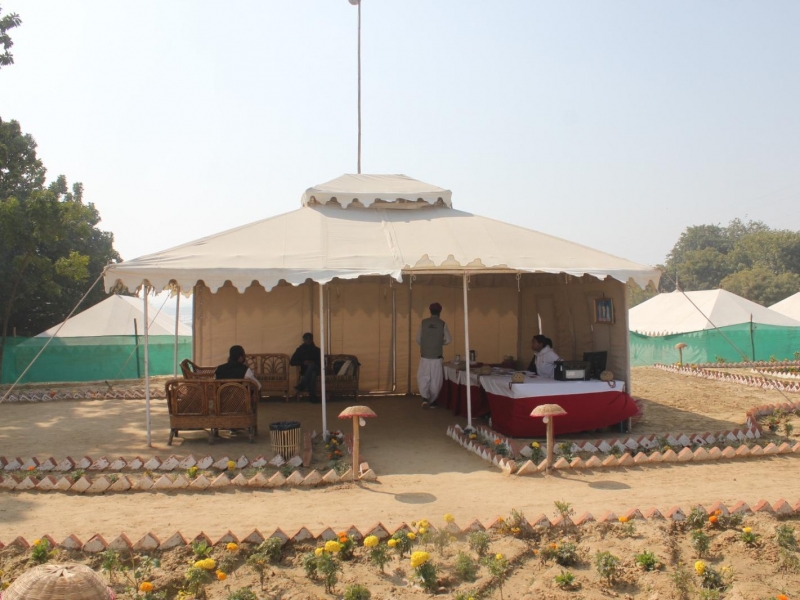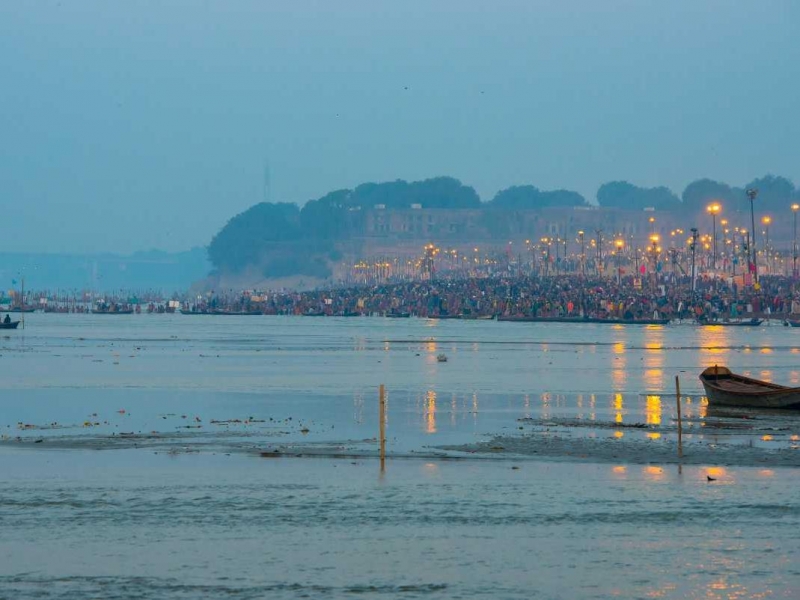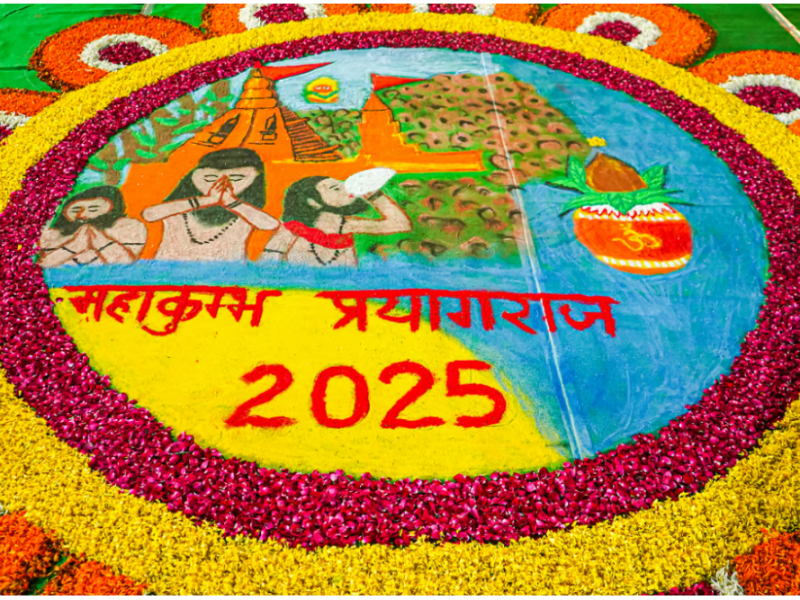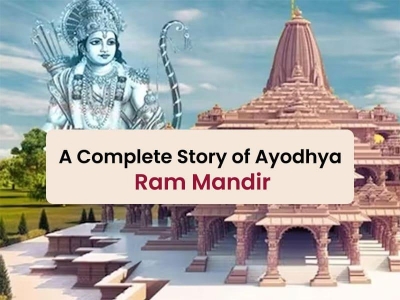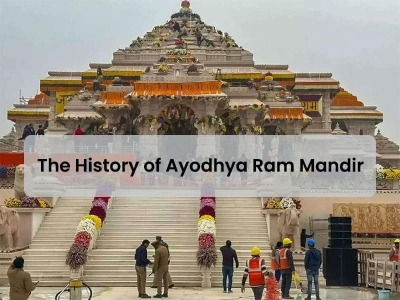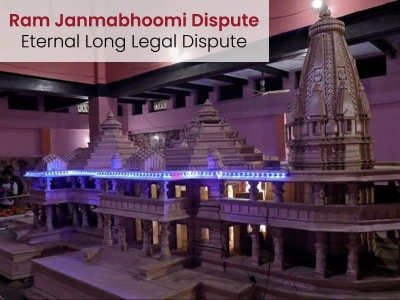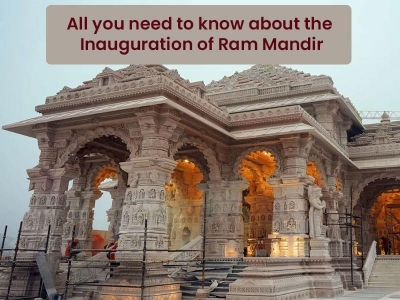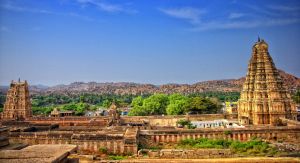Discover the extensive history of the Ram Mandir in Ayodhya, tracing its roots from 1528 to 2024. From its origins to the present day, witness the journey of this iconic temple dedicated to Lord Ram. Dive into historical events, controversies, and the significant milestones that shaped the Ram Mandir's narrative over the centuries. If you are keen to know about the complete journey of the temple, you are at the right place, as you will get to know everything about the sacred Ram Mandir. Fasten your seat belts as we are going on a journey of Ayodhya and the legacy of Ram Mandir. Want to travel to Ayodhya? We have got you covered. You can explore all the travel details to Ayodhya on this page.
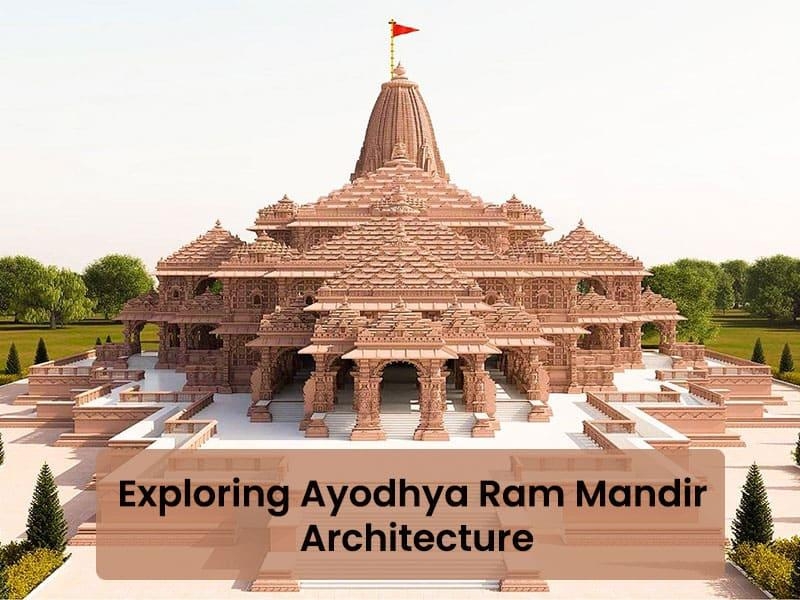
The sacred Ram Mandir in Ayodhya has become the talking point of the nation as its consecration ceremony, or Pran Pratishda, is near. On 22nd January 2024, the auspicious Ram Mandir temple will be inaugurated, which is a massive moment in Indian history as it has been a controversial legal issue for more than three centuries.
The sacred Ram Mandir in Ayodhya has become the talking point of the nation as its consecration ceremony, or Pran Pratishda, is near. On 22nd January 2024, the auspicious Ram Mandir temple will be inaugurated, which is a massive moment in Indian history as it has been a controversial legal issue for more than three centuries.
Whenever we see the news of Ram Mandir on the news, we get awestruck by the magnificent architecture and the attention to detail. The temple is a great example of modern architecture combined with traditions, as various elements used in the temple's construction have come from different places in the country. There is a religious reason and story for every element that is involved in the construction of the Ram temple, whether it is the stone used in the construction or, the wood, or even the rice that will be part of the Prasad in the inauguration ceremony.
If this doesn't amaze you, I don't know what will. The architecture of the iconic temple is breathtaking, and one cannot help but look at the gorgeous photos of the temple to explore the architecture. If the architectural nerd in you cannot wait to visit the temple, then you aren't alone, as millions of people want to visit the temple. Here are the basic details of the temple's architecture.
| Particulars | Details |
| Total Area | 2.7 Acres |
| Total Built-up Area | 57,400 Sq. ft. |
| Style Of Architecture | Gurjara-Chaulukya style of Nagara style architecture |
| Total length of the temple | 360 feet |
| Total width of the temple | 235 feet |
| Total height of the temple including peak | 161 feet |
| Total number of floors | 3 |
| Height of each floor | 20 feet |
| Number of columns in the ground floor | 160 |
| Number of columns in the first floor | 132 |
| Number of columns in the second floor |
74 |
| Number of pedks and pavilion in the temple | 5 |
| Number of Gates in the Temple | 12 |
The enormous temple will be the 3rd largest Hindu temple in the world. The magnificent architecture of this temple has been done after the involvement of various educational and research institutes like Central Building Research Institute, National Geophysical Research Institute, IIT Bombay, IIT Guwahati, and IIT Madras. More than 4,000 workers were employed in the construction of the temple. Artisans, sculptors, and stone carvers from all parts of the country were hired to showcase their craftsmanship. The temple has done the task of uniting the country as various states have provided their popular construction materials.
The construction and design of the temple are done by Larsen & Toubro, with Tata Consulting Engineers being the project manager consultant for the construction of the temple.
1. Materials Used in Architecture
The material used in the building of the temple has raised a lot of eyebrows as the effort to fulfil all the traditional customs has been commendable. There is a genuine and significant reason for the use of every material and the location that it has been brought from. Here are the materials used in the construction of the temple:
Wood
Top-quality Sagwan wood from Chandrapur District is used in the temple's construction. The Sagwan wood is known for its incomparable durability and water and termite resistance. The Sagwan wood from Chandrapur district is known to last for centuries. Considering the fact that the temple had to go through legal disputes for centuries, the intent to use highly durable wood aims towards a temple that will last for centuries.
1800 cubic metres of wood was used in constructing the temple.
Stone
Various types of stones are used in the construction of the temple, as some stones provide strength to the structure while some are used to carve idols. Sandstone is a vital part of the construction of temples and is also used in the Grand Ram Mandir in Ayodhya. But not just any sandstone; premium quality pink sandstone weighing 4.7 lakh cubic feet is used in the temple's construction. The sandstone is from the Bharatpur region of Rajasthan.
The granite used in the construction of Ram Mandir came from Telangana and Karnataka, and the flooring material came from Madhya Pradesh. The shaligram stone for construction of idols came from Nepal. The two shaligram stones weighed around 30 tonnes and 14 tonnes and were brought from Kali Gandaki waterfall, which is more than 6,000 feet above sea level.
So, you can imagine the sheer dedication and commitment shown in the temple's construction.
A great thing to notice is that while a lot of materials are used from Pan India to construct the temple, there are a lot of renowned materials that aren't used in the construction. This might come as a shock to a lot of people, but Steel, Concrete and modern materials like carbon fibre or glass rods aren't used in the construction of the Ram Mandir. The reason being the focus on constructing a temple that will last for ages, and these materials haven't got a proven track record of lasting such long.
2. Style of Architecture and Design
The style of architecture chosen for the temple matters a lot as it sets the temple's primary theme. The temple is made according to the Gurjara-Chaulukya style of Nagara's architecture. Nagara Architecture is used in Northern India, but the temple's architecture also draws inspiration from South Indian temples located in Rameshwaram, Tirupati, and Kanchipuram.
In fact, at first, the architects wanted to go for the South Indian Gopuram style of entry carving, but the lack of land forced them to change the style of architecture. However, the architects have made efforts to make the appearance of the temple more South Indian.
Traditional Architecture is used in the construction of the temple, making it closer to everyone's heart as everyone wants to see traditional Indian architecture in this modern world. What better way to showcase the ionic Indian architecture on one of the most impactful temples of the world.
3. Structure
Supported by 392 pillars, the Ram Mandir is built over three floors. In total, there are 44 doors in the temple, which shows us its gigantic size. The pillars and walls will be covered with the statues of deities, and all 4 corners of the compound will be covered with temples dedicated to deities Surya, Bhagwati, Ganesh, and Shiv. The sacred Shri Ram Darbar will be on the first floor, and there will be five mandaps in the temple: Nritya Mandap, Rang Mandap, Sabha Mandap, Prarthana Mandap and Kirtan Mandap.
If you think this is grandeur, wait until you know the temple will also have its own sewage and water treatment plants, fire service, and an independent power station. The temple can accommodate more than 1,500 people at a time, and it is the first temple in India to have 200KA light arresters installed on it, which will protect it from lightning. The entire walkways in the temple are engraved with 100 events depicting Valmiki's Ramayana.
The best part about the temple is that it is not just filled with substantial architectural masterpieces but is well coupled with nature, as 70% of the land is left green. There has been a heavy emphasis on environmental and water conversation in the temple surroundings. The Ram Mandir looks elegant and classy while maintaining the lavish outlook of the Ram Rajya, as the 14 doors of the temple are gold-plated.
Stating that the Ram Mandir in Ayodhya looks fabulous will be an understatement. Words cannot express people's emotions with the temple, and now that its scintillating construction is done, people cannot wait to visit the temple.
Recommended For You
-
 Best Places to Stay During Kumbh 2025: From Tents to Luxury Hotels
Best Places to Stay During Kumbh 2025: From Tents to Luxury Hotels
-
 The Ultimate Guide to Maha Kumbh Mela 2025 at Prayagraj
The Ultimate Guide to Maha Kumbh Mela 2025 at Prayagraj
-
 Understanding the Importance of the Sangam: The Confluence of Faith
Understanding the Importance of the Sangam: The Confluence of Faith
-
 The History and Mythology of Kumbh Mela: A Journey Through Time
The History and Mythology of Kumbh Mela: A Journey Through Time
-
 Best Places to Eat in Goa: Indulge in a Culinary Delight
Best Places to Eat in Goa: Indulge in a Culinary Delight
-
 The Future of Drone Tourism: How Drones are Changing the Travel Industry
The Future of Drone Tourism: How Drones are Changing the Travel Industry
